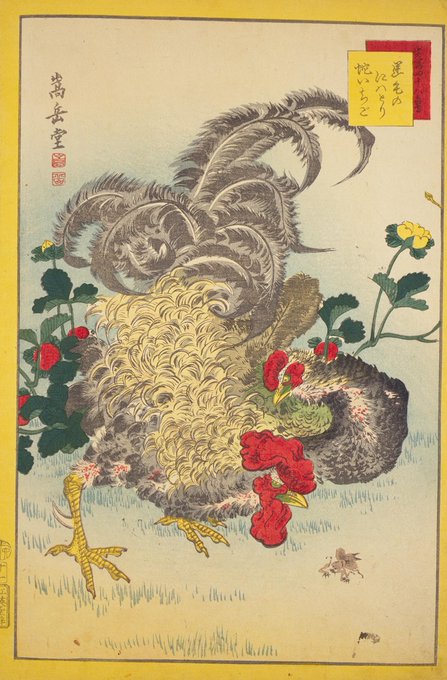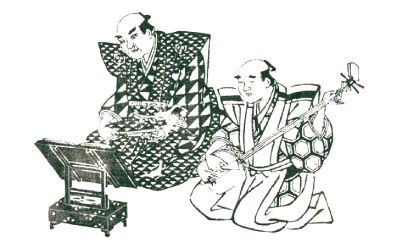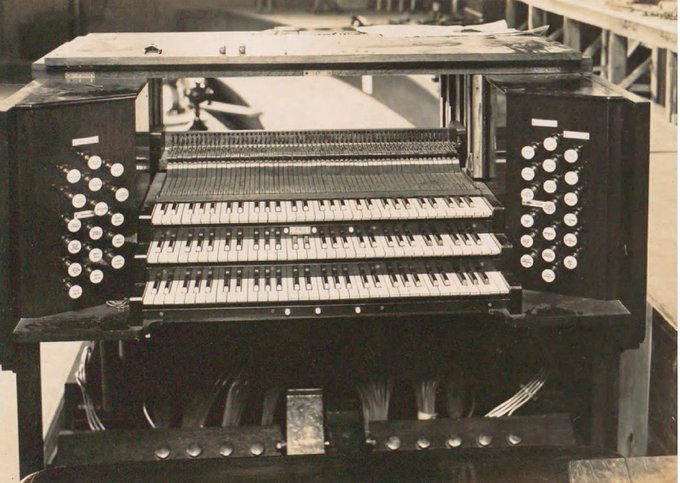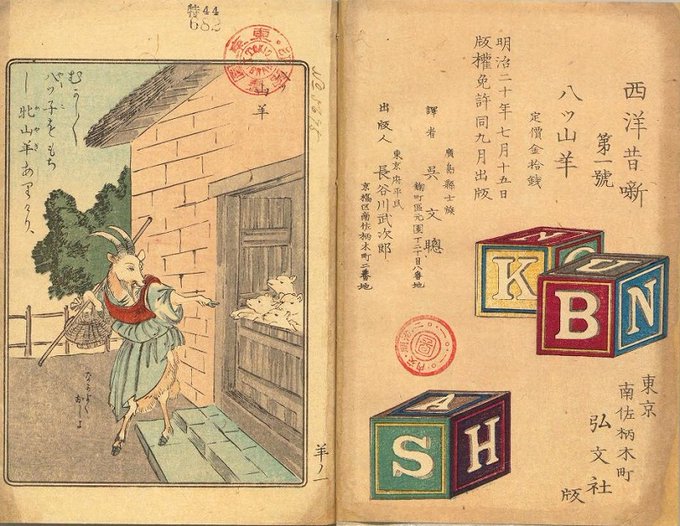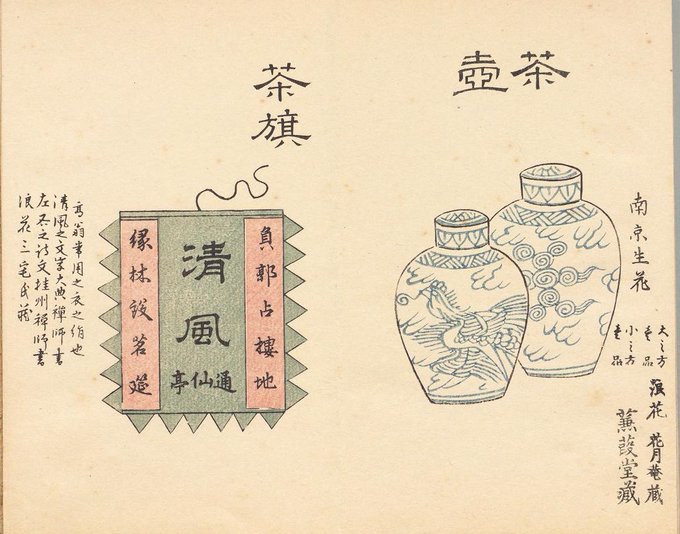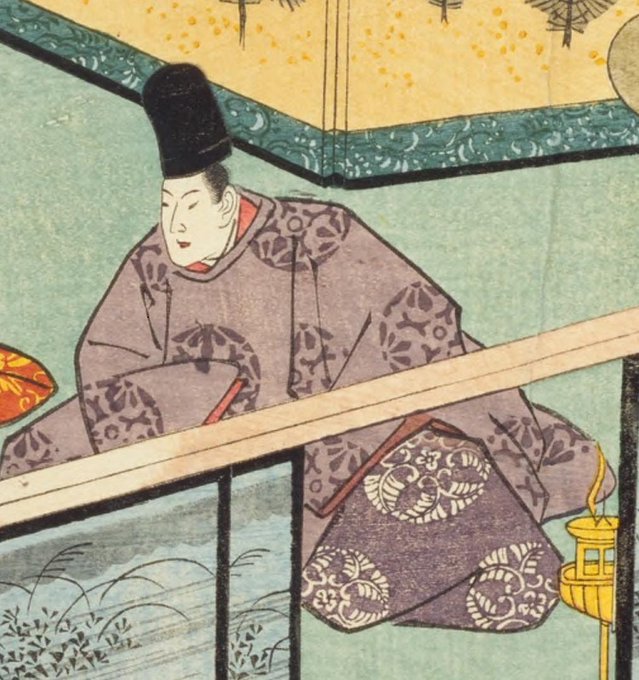ndldigitalのTwitterイラスト検索結果。 294 件中 2ページ目
Find lovely birds and flowers in Ikiutsushi shijuhachi taka, containing 48 woodblock prints. #ndldigital https://t.co/34nNgyskPl
This three-volume #picturescroll produced in the Edo period tells the origin of the famous #Japaneseswords Higekiri and Hizamaru, inherited from the #Minamotoclan, as well as various stories surrounding the #swords. #ndldigital
https://t.co/Ia6e4rz5Mo
A lithograph artist, Oda Kazuma (1882-1956), depicted urban nights. In the first picture, two girls wearing #kimono are looking at the Kamogawa River. The third one shows street stalls. #ndldigital https://t.co/v8NGnSMHSA
Do you know what “Gidayubushi ningyo joruri” is? Find out with interesting commentary from the director general of the NDL. #ndldigital https://t.co/ULRWay6kvJ
Harimaze zue is a style of ukiyoe which contains several paintings in one sheet. In this harimaze zue #UtagawaHiroshige (1797-1858) depicts famous specialties and stories in 8 regions of Japan. #ndldigital https://t.co/bmgfdRUlpl
Have you ever seen such unique fish? These drawings from Igyo Zusan were made by Kurimoto Tanshu (1756-1834), who served the Edo Shogunate as a doctor. #ndldigital https://t.co/pNNh6eHjL3
#Shiohigari is an event to collect shellfish on shallow sandy beaches. It has a long history and it is often depicted in older paintings and #ukiyoe (woodblock prints). #ndldigital https://t.co/nQsjCqfZz9
ドラマ では、#北条政子 と #源頼朝 の絆の深さが伺える回でした。
#芳虎 作の武者鑑に、夫妻の姿が描かれています。
よく見ると政子の人物像の説明には、「嫉妬深く」なんて言葉も書かれています。政子の嫉妬深さと愛情の深さは紙一重だったのかもしれません。
#ndldigital #鎌倉殿の13人
Guess what difficulties there were when installing a pipe organ in Japan in the 1920's, when pipe organs were not yet well known? Read this article to learn more. #ndldigital
https://t.co/XbyJ0xrnmJ
Welcome to our digital exhibition! Learn about the history of the Japanese calendar and try several riddles with humorous pictures. #ndldigital https://t.co/dQJfSmjBf3
Japanese translation of Grimm’s fairy tale, "The wolf and the seven young kids," published as "Eight goats" in 1887. You can see two pop-ups in this book. #ndldigital https://t.co/kmRJyKAeAb
Whose #autograph is this? In this digital exhibition, you can see many well-known people’s autograph manuscripts and original artworks. Click here to see more: #ndldigital https://t.co/TsYm63Knag
On June 16 of the lunar calendar, there was an event at Edo Castle to give confections to the vassals. A man can be seen looking back, perhaps curious about the confections that others were receiving. #ndldigital https://t.co/qVet1mlqMv
Picture scrolls first appeared during the Nara period in the 8th century and are considered to be the origin of picture books in Japan. Read more about their history in this article! #ndldigital https://t.co/BRvTt2CSWn
Maisao (Baisao) was a Buddhist monk and #Sencha master in the mid-Edo period, who is regarded as the founder of the Sencha #teaceremony. This book is a color-printed illustration of the Sencha utensils in his collection. #ndldigital https://t.co/0NxEdNjtuL
Hikaru Genji is the main character of Genji monogatari, a full-length novel written by MURASAKI Shikibu in the early 11th century during the Heian period. He may be said to be the most famous fictional handsome man in Japan. #ndldigital
https://t.co/3Gv8J3EMNJ
Rainbow in an #ukiyoe. It gives us a mysterious impression, maybe because it is not colorful. What did people in the Edo period imagine when seeing rainbows? #ndldigital https://t.co/dyFejjNRjx
This travel diary kept by Iijima Koga contains colored sketches of the Japanese landscape. #ndldigital https://t.co/9DEyvlwnzF






